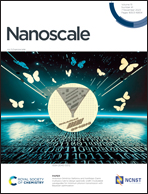A physics rule to design aperiodic width-modulated waveguides for minimum phonon transmission with Bayesian optimization
Abstract
Aperiodic nano-waveguides (nWVGs) and superlattices (SLs) limit phonon transmission and heat conduction much more efficiently than periodic ones. They could block parasitic heat conduction that restricts heat management and energy conversion at the nanoscale. Aperiodicity can be realized in multiple ways and with variable degrees of complexity. Machine learning optimization of hetero-SLs for minimum coherent phonon conduction showed optimal aperiodicity for moderate disorder against physics intuition. Here, we report on optimal aperiodicity in width-modulated nWVGS for maximum disorder as expected by physics. Optimizing aperiodic geometry modulation is particularly challenging due to the enormous possible configurations. We set up a feasible optimization problem removing unnecessary complexity and we demonstrate efficient Bayesian optimization. Our results confirm the predicted physics rule that minimum thermal conductance occurs for the most disordered arrays of modulation units; the degree of disorder being quantified by the number of non-identical modulation units. Our work opens a route to design geometrical aperiodicity and control transmission across metamaterials.



 Please wait while we load your content...
Please wait while we load your content...